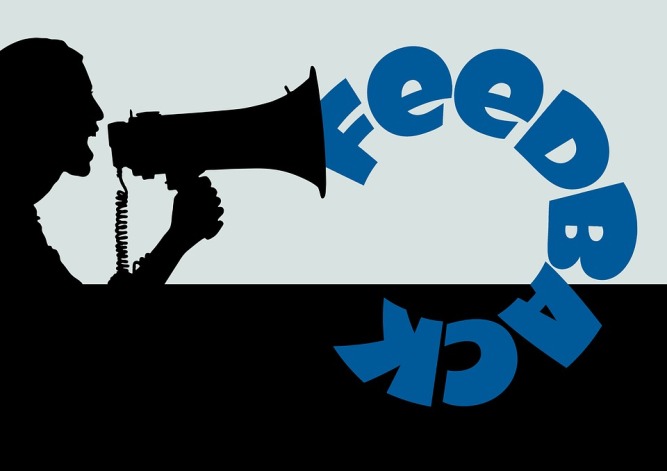The Coach Approach To Giving and Receiving Feedback In Schools

This post first appeared in Education Week’s Finding Common Ground.
Feedback, among the most impactful, and yet also among the most variable influences on student achievement, matters. It matters profoundly.
Educational thought leader John Hattie (2009), whose investigation of more than 800 meta-analyses represents the largest collection of evidence-based research into what actually works in schools, has found feedback to be among the top 10 influences on student achievement. While Hattie’s research primarily describes the effect of feedback from teachers to students, he asserts that his findings pertain to professional learning as well. Simply stated, for schools to improve, feedback to both educators and students is essential.
Yet, Hattie offers a cautionary note. While skillfully shared feedback can catapult learning to new heights, poorly offered feedback can have minimal impact, or worse, can potentially have negative impact, leading to disengagement and resentment.
So how can educators learn both to give and receive feedback in a way that is impactful, leading to professional learning and growth? And, even more challenging, how can principals function in a coaching role when they are required to evaluate? How can teachers feel safe to experiment, take risks, and reveal vulnerabilities with a person who makes important decisions about their employment? These are among the core questions my colleagues Jessica Johnson, Kathy Perret and I explored in researching and writing The Coach Approach To School Leadership: Leading Teachers To Higher Levels of Effectiveness (ASCD, 2017).
A coach is someone who can give correction, without causing resentment.
John Wooden
Renowned UCLA coach and ten time NCAA national championship winner John Wooden’s definition of a coach as someone who can give correction (or, perhaps feedback) without causing resentment, gives rise to two vital keys to offering impactful feedback.
- To give feedback it is vital to recognize that feedback messages are filtered through learners’ perceptions, so what works as effective feedback for one learner might not work for another learner. (Hattie, 2012)
- Giving feedback hinges on the ability to reflect on progress toward transparent, challenging goals connected to clear success criteria. (Hattie, 2009; Wiggins, 2012)
These keys are so central to the process of giving and receiving feedback that it is important to delve more deeply into each.
Key Number One
To give feedback it is vital to recognize that feedback messages are filtered through learners’ perceptions, so what works as effective feedback for one learner might not work for another learner. (Hattie, 2012)
An important Insight I wish I had when I began my journey to become a “principal-coach”, redesigning the role of principal to function as much as possible as a coach, is that qualities of trustworthiness such as reliability, dependability, capability (Horsager, 2011), benevolence, honesty, and openness (Tschannen-Moran, 2004) are vital, yet insufficient. While aiming to explore curriculum and pedagogy, coaching conversations very quickly move to more sensitive and vulnerable depths, prompting educators to identify gaps between who we currently are and who we aspire to become. Engaging in these delicate, yet potentially transformative conversations requires us to be nonjudgmental. This is a new skill for many educators, who have learned in formal programs and through practice to focus on grading and evaluation.
. While difficult, many techniques of instructional coaches can help. Two frameworks in particular have been very valuable to me. The first embraces the use of four prompts:
- I noticed . . .
- I wonder . . .
- What if . . . ?
- How might . . .?
By utilizing these prompts, educators functioning in a coaching role can train themselves not to offer their own opinions or advice, but instead to support reflection. This enables us not only to understand learners’ perceptions, but even more significantly to help our learners, whether students or professionals, to uncover and recognize their own perceptions and self-understandings.
Once comfortable with suspending judgement, educators can extend coaching conversations using the ORID framework, involving a progression through four types of questions:
- O – Objective questions (to relieve stress and invite participation)
- R – Reflective questions (to elicit emotional responses and personal reactions)
- I – Interpretive questions (to generate possibilities for the future)
- D – Decisional questions (to develop solutions leading to future actions)
Through practicing use of these nonjudgmental prompts and questions, educators seeking to utilize coaching can gain ever greater skill supporting self-reflection meaningful to teachers.
Key Number Two: Goals
Giving feedback hinges on the ability to reflect on progress toward transparent, challenging goals connected to clear success criteria. (Hattie, 2009; Wiggins, 2012)
Receiving feedback is challenging. As much as I have always wanted to appreciate feedback, I have often noticed a tightness in my shoulders, an acceleration of my heartbeat, or a fluttering in my stomach awaiting reaction to my work. While I long for critique to help me improve, I simultaneously hope for praise, and then feel embarrassed by my yearning for a pat on the back. I want to learn, stretch my thinking, improve my practice, yet often feel insecure and crave reassurance and affirmation. It’s my sense that these reactions are common.
It’s only recently, as I have had the opportunity to lead a Project-Based Learning school in which we do not give grades, but instead help students prepare for public exhibitions, as well as to publish their work in digital portfolios, that I have truly been able to appreciate nonjudgmental, goal-centered feedback. I’ve watched with admiration as students aged 5 through 10 take in feedback with delight, viewing it as a gift that will help them prepare their work so that it is ready for exhibition and ready to publish. The experience of supporting students to give and receive feedback has enabled me to grow as well, focusing on ambitious goals. It has also helped me truly to recognize the transformational potential of feedback that is connected to goals of importance to the individual to whom the feedback is being given.
References
Hattie, J. (2009). Visible learning. London: Routledge.
Hattie. J. (2012). Visible learning for teachers. London: Routledge.
Horsager, D. (2011). The trust edge. New York: Free Press.
Tschannen-Moran, M. (2004). Trust matters: Leadership for effective schools. San Francisco: Jossey Bass.
Wiggins, G. (2012, September). Seven keys to effective feedback. Educational Leadership, 70(1), 10-16.
Photo courtesy of Pixaby
You can learn more about The Coach Approach To School Leadership: Leading Teachers to Higher Levels of Effectiveness on Principal Center Radio and download the first chapter for free.


